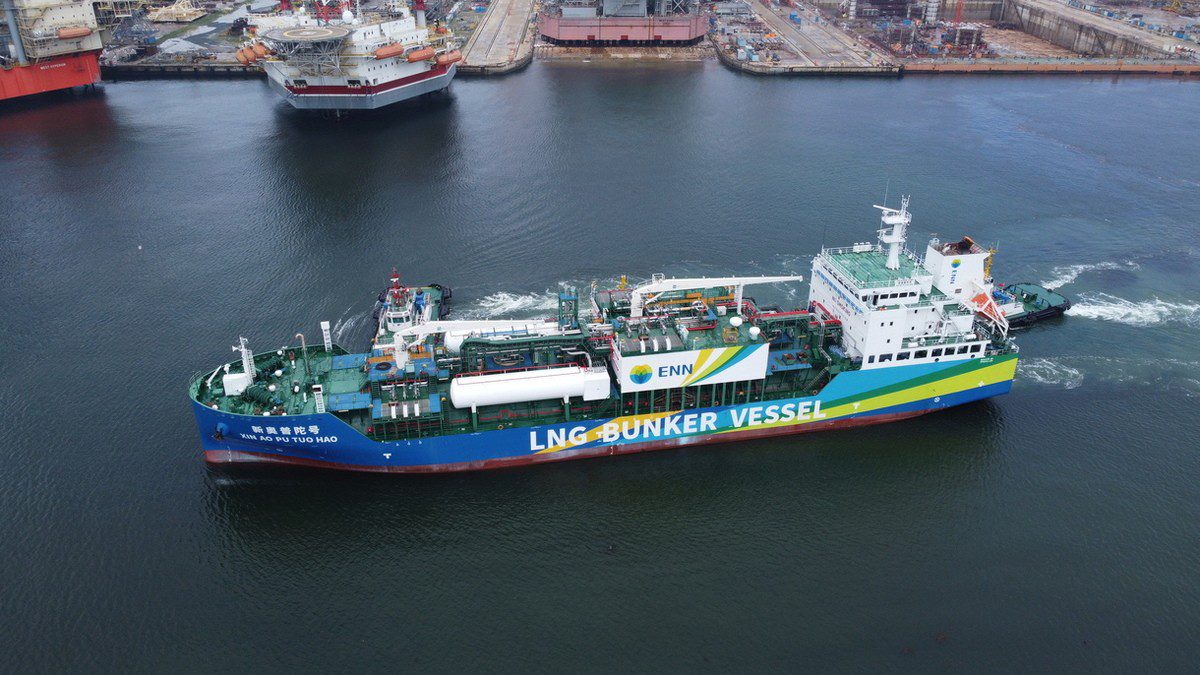 Xin Ao Pu Tuo Hao is equipped with Wärtsilä’s cargo handling system, the W34DF single-propeller main engine and PTO generator with semi-pressurised, full refrigerated cargo tank (source: China Classification Society)
Xin Ao Pu Tuo Hao is equipped with Wärtsilä’s cargo handling system, the W34DF single-propeller main engine and PTO generator with semi-pressurised, full refrigerated cargo tank (source: China Classification Society)
China welcomed its first bunkering tanker last week when Dalian Shipbuilding delivered Xin Ao Pu Tuo Hao
The 8,500-m3 capacity ship was built at Dalian Shipbuilding Industry, contracted by ENN Energy Holding and will be operated by Tianjin Southwest Maritime.
China Classification Society (CCS) said the delivery of Xin Ao Pu Tuo Hao marks a “new milestone in the practical application of energy-saving and emissions reduction technology in China’s shipping industry.”
This is China’s first domestic newbuilding LNG bunker vessel classified by CCS, meeting the organisation’s Rules for Liquefied Natural Gas Bunkering Vessel and now sports the LNG Bunkering Ship class notation.
The ship measures 119 m by 20 m and is equipped with Wärtsilä’s cargo handling system, the W34DF single-propeller main engine and PTO generator with semi-pressurised, full refrigerated cargo tank.
Two cargo hold spaces, each fitted with an independent Type C cargo tank, are designed for a minimum design temperature of -164°C and a maximum design vapour pressure of 3.7 bar. Two independent vacuum-insulated deck tanks with a minimum design temperature of -196°C and a design vapour pressure of 9.0 bar are equipped above the main deck.
Xin Ao Pu Tuo Hao features a flap-type rudder, controllable pitch propeller, retractable azimuth side thruster and stern thruster for increased manoeuvrability while the sub-cooling system and dual-fuel propulsion combine to provide an effective control of the boil-off rate.
The vessel can provide a safe ship-to-ship mooring in wind of Beaufort scale 7 and below according to a security risk analysis assessment, reaching the advanced international level. The vessel, equipped with 14 mooring lines, can provide a strong mooring ability in bunkering operations at port or anchorage.
Two independent deck tanks can be filled with liquid nitrogen, which provides drying, inerting and precooling services to any newbuilding LNG carriers and ships using natural gas fuels. Four bunkering stations located in midship and forward ship can provide a safe and fast bunkering service to high and low-pressure fuel tanks of all types.





